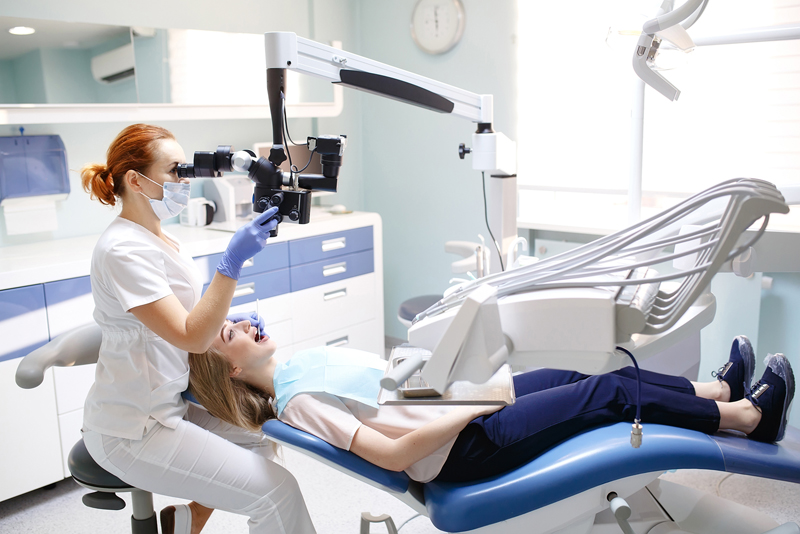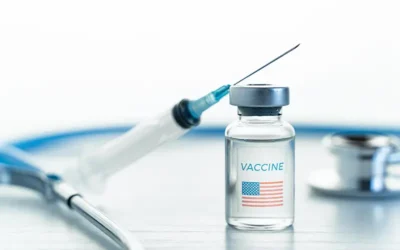As dentists dedicate their efforts to patient care, it’s crucial to also focus on the financial aspects of their practice. An often encountered challenge in dental practices involves accurately assigning codes to document different procedures for reimbursement purposes. In fact, many practices opt for outsourced dental billing services to handle this task efficiently. Achieving success in dental billing hinges significantly on gaining a thorough grasp of the CDT, CPT, and ICD distinct code sets, and understanding when and how to apply them. Each code set serves a specific purpose, and every payer maintains its own guidelines for utilizing these codes in claim submissions.
CDT Codes
Current Dental Terminology (CDT) codes are a standardized system used in the United States to document and report dental procedures and services provided by dentists and oral healthcare professionals. Each alphanumeric CDT code begins with the letter ‘D’ (the procedure code) and is followed by 4 numbers (the nomenclature). Developed and are maintained by the American Dental Association (ADA). CDT codes serve several important purposes in the dental field.
CPT Codes
The Current Procedural Terminology (CPT) code set is maintained by the American Medical Association and used to report medical procedures and services to payers. CPT codes are often referred to as Level I codes.
ICD-10 Codes
The International Classification of Diseases (ICD) is a globally used medical classification used in epidemiology, health management and for clinical purposes. ICD-10 codes are diagnostic codes used to group and identify diseases, disorders and symptoms. Each diagnosis code is a unique, alphanumeric string of characters representing a disorder or disease concept. Diagnostic coding involves transforming verbal descriptors of diseases, illnesses and injuries into standardized codes in claims for services.

Receive timely and optimal reimbursement with our dental billing services!
Code Use in Dental Practices – Key Considerations
- Use CDT codes to bill dental services: CDT codes provide a standardized way of describing dental procedures, which helps ensure consistency and clarity in dental documentation and communication. The CDT Code set categorizes codes by type of service: diagnostic, preventive, restorative, endodontics, periodontics, removable prosthodontics, maxillofacial prosthetics, implant services, fixed prosthodontics, oral and maxillofacial surgery, orthodontics, and adjunctive general services. Both in-network and out-of-network providers should use CDT codes for billing dental services on claims to third-party payers.
There are evaluation CDT codes to report a first, subsequent, or other types of patient encounters –
- D0150 Comprehensive oral evaluation – new or established patient
- D0145 Oral evaluation for a patient under three years of age and counseling with primary caregiver
- D0120 periodic oral evaluation
- D0140 Limited oral evaluation – problem focused
- D0160 Detailed and extensive oral evaluation – problem focused, by report
- D0170 Re-evaluation – limited, problem focused (established patient; not post-operative visit), D0171 Re-evaluation – post-operative office visit
- D0180 Comprehensive periodontal evaluation – new or established patient
- D0190 Screening of a patient
- D0191 Assessment of a patient
- D9310 Consultation – diagnostic service provided by dentist or physician other than requesting dentist or physician
- D9450 Case presentation, detailed and extensive treatment planning
Mouth x-ray CDT codes include:
- D0210 Intraoral – complete series of radiographic images
- D0220 Intraoral – periapical first radiographic image
- D0230 Intraoral – periapical each additional film
- D0251 Extra-oral posterior dental radiographic image
- D0272 Bitewings- two radiographic images
- D0274 Bitewings- four radiographic images
By using the right CDT codes on claims to describe the specific procedures and services they provide, dentists can receive appropriate payment from insurance companies, Medicaid, and other payers. This code set is updated annually to reflect advancements in dental technology and changes in dental procedures. All claims submitted on a HIPAA standard electronic dental claim must use dental procedure codes from the CDT code version in effect on the date of service.
- Use CPT codes to report medical procedures or services that are medical in nature: Dentists should use CPT codes to report medical procedures or services that are outside the scope of routine dental care and are considered medical in nature. Some common situations in which dentists may use CPT codes include: oral and maxillofacial surgery; sleep apnea treatment; treatment of temporomandibular Joint (TMJ) disorders; diagnosis and treatment of oral lesions, tumors, or other pathology, and management and treatment of facial trauma, including fractures of the jaw or facial bones. When dental and medical conditions overlap, dentists collaborate with medical professionals and use CPT codes to bill these consults.
- Consider type of coverage – dental or medical: A major factor governing CDT vs. CPT code use is the type of coverage that the patient has. To assign a CDT dental code on the claim for a dental procedure, the patient must have dental insurance. However, based on the patient’s insurance policy coverage, medical insurance can be billed if the patient received dental care related to a medical condition. As medical plans do not pay for treatment claimed as CDT procedures, dentists need to report the correct CPT codes to describe the medical treatment when submitting claims to medical plans (www.cda.org). Examples of dental procedures that can be billed to medical insurance include:
- All oral and dental procedures associated with any kind of traumatic injury to the mouth
- Exams and consultations when oral cancer screening is done, and in preparation for any other medically billable procedure
- Emergency treatment of oral inflammation and oral infections
- Diagnostic, radiographic, and surgical or healing stents
- Radiographs for certain screening and diagnostic purposes
- Biopsies and excisions, including smears and brush biopsies
- Surgery associated with interim and final prostheses necessitated by a traumatic injury or any medical condition
However, to bill medical insurance, the dental code intended to be used should have a compatible medical code. This can be identified by cross referencing with the CPT book. Examples of procedures that have a compatible CPT code are:
Alveoloplasty w/ extractions per quadrant D7310 / 41874
I & D of abscess – intraoral soft tissue D7510 / 41800
The standard practice is to submit the dental claim first and then, if it is denied, submit a medical claim.
- Use the appropriate diagnosis code based on the patient’s presenting condition: Both CDT codes and ICD codes are HIPAA standards applicable to electronic dental claims. ICD codes may be used along with CDT codes on claims submitted to dental benefit plans when needed but are always required on claims for dental services submitted to medical benefit plans. ICD-10 codes in claims filed for dental benefits inform the payer why the procedure was performed and the associated disease, illness, symptom or disorder. The ICD-10 code categories K00 to K95 which describe diseases of the digestive system include diseases of the mouth and conditions treated by dentists. The appropriate diagnosis code should be selected based on the patient’s present condition(s). Here is a list of some ICD-10 diagnosis dental codes:
- A69.0 necrotizing ulcerative stomatitis
- A69.1 other Vincent’s infections
- B00.2 herpesviral gingivostomatitis and pharyngotonsilli
- B00.9 herpesviral infection: unspecified
- K00.0 anodontia
- K00.1 supernumerary teeth
- K00.2 abnormalities of size and form of teeth
- K00.3 mottled teeth
- K00.4 disturbances of tooth formation
- K00.5 hereditary disturbances in tooth structure not elsewhere classified
- K00.6 disturbances in tooth eruption
- K00.7 teething syndrome
- K01.0 embedded teeth
- K01.1 impacted teeth
- K02.3 arrested dental caries
- K02.5 dental caries on pit and fissure surface
- K02.7 dental root caries
- K03.0 excessive attrition of teeth
- K03.1 abrasion of teeth
- K03.2 erosion of teeth
- K05.0 acute gingivitis
- K05.1 chronic gingivitis
- K05.2 aggressive periodontitis
- K08.1 complete loss of teeth
- K08.2 atrophy of edentulous aleveolar ridge
- K08.20 unspecified atrophy of edentulous alveolar ridge
- K08.21 minimal atrophy of the mandible
- K08.22 moderate atrophy of the mandible
- K08.23 severe atrophy of the mandible
- K08.24 minimal atrophy of the maxilla
- K08.25 moderate atrophy of the maxilla
- K08.26 severe atrophy of the maxilla
- K08.3 retained dental root
ICD-10-CM Code(s)
- Z01.20 Encounter for dental examination and cleaning without abnormal findings
- Z01.21 Encounter for dental examination and cleaning with abnormal
- Z13.84 Encounter screening for dental disorders
Are you prepared to
enhance the efficiency of your dental billing processes, leading to increased revenue?
Proper training and ongoing education in CDT, CPT and ICD-10 coding are essential for dental staff to maintain compliance and effectively manage the financial aspects of their practice. Accurate code usage and thorough clinical documentation are vital not only for receiving timely and rightful reimbursements but also to prevent potential accusations of fraud or violations of state and federal laws, including noncompliance. Furthermore, the intricacies are compounded by the fact that each payer or insurance carrier maintains its own distinct regulations concerning the coverage of specific dental costs. Dental practices also grapple with challenges such as navigating appeals procedures, comprehending Explanation of Benefits (EOB), achieving medical carrier credentialing, and conducting dental insurance verification. The reassuring news is that partnering with a competent dental billing company can greatly enhance code accuracy and streamline the claims submission process.





